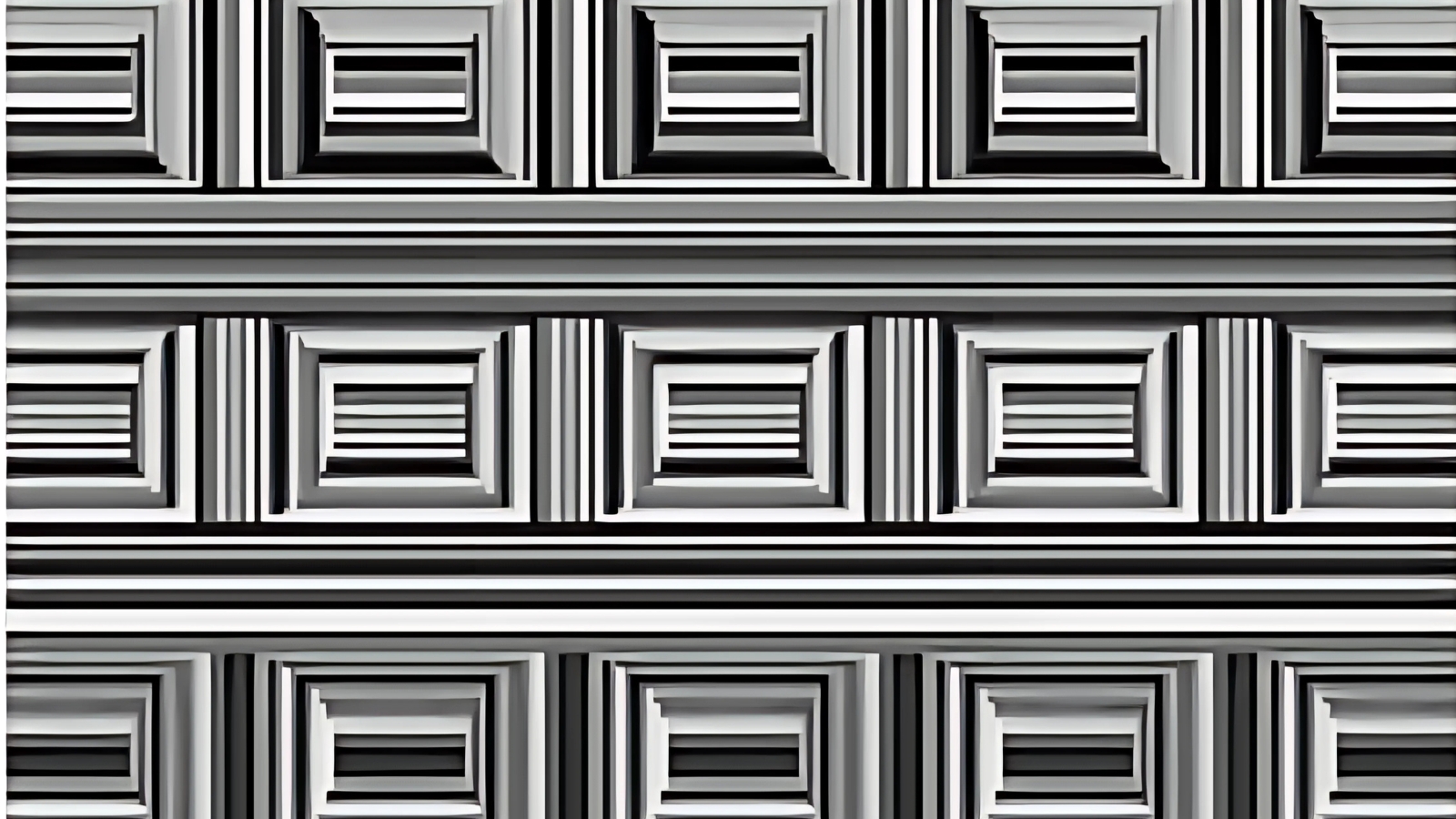Find 16 Circles :A nearly two-decade-old optical illusion has resurfaced across social media platforms, leaving millions of users scratching their heads as they attempt to locate 16 circles hidden within what appears to be a simple geometric pattern.
The “Coffer Illusion,” created by Stanford University psychologist Anthony Norcia, demonstrates the fascinating complexity of human visual perception and continues to challenge our understanding of how the brain processes visual information.
The Science Behind the Viral Visual Puzzle
Understanding the Coffer Illusion Phenomenon
The Coffer Illusion presents viewers with a pattern of black, white, and gray lines that most people immediately perceive as rectangular shapes or squares.
However, embedded within this seemingly straightforward geometric design are 16 perfectly formed circles that remain invisible to many observers, even when they know the circles exist.
This remarkable visual trick earned recognition as a finalist in the prestigious 2006 Best Illusion of the Year Contest, organized by the Neural Correlate Society.
The illusion gets its name from “coffer,” an architectural term referring to decorative sunken panels found in ceilings and walls.
Why Our Brains Favor Rectangles Over Circles
Research conducted by neuroscientist Susana Martinez-Conde at SUNY Downstate Medical Center reveals that our visual system is inherently biased toward detecting corners and angles rather than curved shapes.
This preference stems from evolutionary adaptations that helped our ancestors identify potential threats and navigate complex environments.
The brain’s tendency to emphasize corners creates what Martinez-Conde describes as increased “salience” for angular shapes.
When viewing the Coffer Illusion, our visual processing system immediately locks onto the rectangular patterns because corners appear brighter and more prominent than the gentle curves that form the hidden circles.
The Psychology of Visual Perception
How Past Experience Shapes What We See
Kyle Mathewson, a neuroscientist at the University of Alberta, explains that our daily exposure to rectangular objects significantly influences how we interpret ambiguous visual information.
Computer screens, building facades, signs, and countless other rectangular elements in our environment have trained our brains to expect and prioritize these familiar shapes.
This learned bias means that when confronted with the Coffer Illusion, most viewers default to seeing the rectangular interpretation because it aligns with their accumulated visual experience.
The circles remain hidden not because they aren’t there, but because our brains aren’t primed to notice them initially.
The Role of Attention and Focus in Visual Processing
The illusion also demonstrates the limitations of human attention and the brain’s tendency to commit to a single interpretation of ambiguous stimuli.
Once viewers lock onto the rectangular pattern, their visual system becomes reluctant to switch perspectives and consider alternative arrangements of the same visual elements.
Interestingly, individuals who do manage to see the circles often report that they can easily switch between both interpretations afterward.
This suggests that awareness and practice can help overcome initial perceptual biases.
Techniques for Spotting the Hidden Circles
Effective Viewing Strategies
Visual perception experts recommend several techniques for revealing the hidden circles within the Coffer Illusion.
The most successful approach involves shifting focus to the vertical lines between the apparent rectangles rather than concentrating on the horizontal elements that create the rectangular impression.
Another effective method involves slightly defocusing the eyes or viewing the image from different distances. This technique, similar to viewing Magic Eye stereograms, can help break the brain’s initial interpretation and reveal the circular patterns.
The Importance of Perspective Shifting
The key to seeing both interpretations lies in learning to consciously shift visual perspective. This skill involves training the brain to consider multiple possible arrangements of the same visual information rather than committing to the first pattern it recognizes.
Modern Applications and Research Implications
Relevance to Artificial Intelligence and Computer Vision
The Coffer Illusion has significant implications for developing artificial intelligence systems and computer vision algorithms.
Understanding how human visual perception can be fooled helps researchers create more robust AI systems that can better interpret ambiguous or challenging visual data.
The illusion also provides insights into the fundamental differences between human perception and computer image processing, highlighting areas where each approach has distinct advantages and limitations.
Educational Value in Understanding Human Cognition
Educators and psychologists continue to use the Coffer Illusion as a powerful demonstration of how cognitive biases influence perception
. The illusion serves as an accessible introduction to complex concepts in neuroscience, psychology, and visual processing.
The Lasting Appeal of Visual Illusions
Why Optical Illusions Continue to Fascinate
The enduring popularity of illusions like the Coffer demonstrates humanity’s perpetual fascination with understanding the limitations and quirks of our own perception.
These visual puzzles provide a unique window into the normally invisible processes that govern how we interpret the world around us.
The social media phenomenon surrounding the 16 circles illustrates how shared puzzlement can bring people together, creating communities of individuals working collectively to understand and explain complex perceptual phenomena.
Cultural Impact and Viral Spread
Maybe this helps? pic.twitter.com/amkPZlli2K
— Joe (@MinuteComedy) July 10, 2022
The recent resurgence of interest in the Coffer Illusion reflects broader trends in digital culture, where classic puzzles and brain teasers find new audiences through social media platforms.
The illusion’s ability to generate discussion and debate makes it particularly well-suited for online sharing and engagement.
Frequently Asked Questions
Q: Are there actually 16 circles in the image, or is this just a trick? A: Yes, there are genuinely 16 circles embedded in the pattern. They’re formed by the intersections of the lines and become visible once you know how to look for them.
Q: Why can some people see the circles immediately while others struggle? A: Individual differences in visual processing, past experience, and attention patterns affect how quickly people can switch between different interpretations of the same image.
Q: Does being unable to see the circles indicate vision problems? A: Not at all. Difficulty seeing the circles is completely normal and doesn’t reflect any vision issues – it simply demonstrates how our brains typically process visual information.
